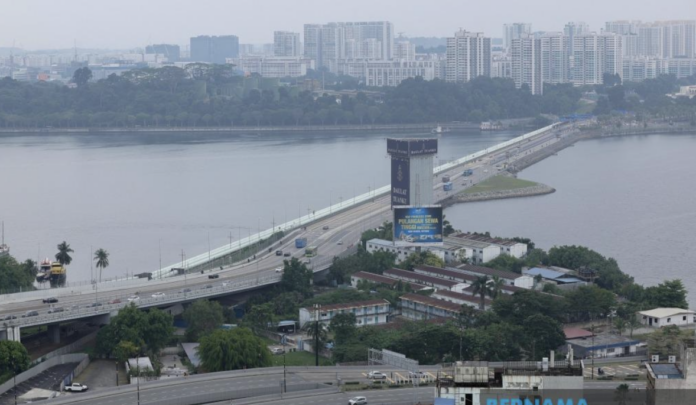JOHOR BAHRU, June 28 – The Johor Causeway, celebrating its centenary this year, is hailed as a historic monument that has borne witness to the enduring diplomatic relations between the governments of Malaysia and Singapore, especially in Johor.
Johor Royal Court Council advisor, Datuk Prof Dr Kassim Thukiman stated that the Johor Causeway, officially opened on June 28, 1924, has played a significant role in both the nations’ continuous economic development.
He noted that historically, the Johor Causeway has encouraged traders in Singapore to invest in Johor and utilise the causeway to export goods.
“For example, since 1910, a Japanese plantation company dominated the rubber sector in much of eastern Johor and used the Johor Causeway to export goods. And in other areas, Japanese companies engaged in iron ore and bauxite mining,” he explained.
“In my opinion, the existence of the Johor Causeway has spurred progress in both Johor and Singapore, as both countries share mutual interests in advancing their economies,” he told Bernama.
The National Archives of Malaysia board member noted that the Johor Causeway continues to be one of the busiest land crossings in the world, with over 300,000 vehicles crossing the Tebrau Strait daily.
This has led both countries to constantly seek solutions to address the congestion, resulting in the implementation of numerous development projects, he added.
“The Malaysian government built the Linkedua (Second Malaysia-Singapore Link) under the North-South Expressway project to connect Tuas, Singapore, and Gelang Patah, Johor, which has helped to alleviate congestion at the Johor Causeway,” he said.
He noted that Keretapi Tanah Melayu Bhd also established a commuter service in Johor Bahru and Woodlands to provide an alternative mode of transportation.
Looking back at the history of the Johor Causeway’s construction, he described it as a solution to the congestion in the Tebrau Strait, which was crowded with barges and ferries at the time, transporting goods from Tanjung Puteri to Kranji, for onward shipment to Tanjong Pagar via Singapore’s Keppel Port.
He elaborated that as a result, the late Sultan Sir Ibrahim Ibni Almarhum Sultan Abu Bakar agreed to lay the foundation stone for the construction of the Johor Causeway on April 24, 1920, and it was officially opened four years later.
The Johor Heritage Foundation board member emphasised that the present generation should recognise that the 1,056-metre causeway carries considerable significance in terms of its impact on economic development, in strengthening familial bonds among the people, and in fostering friendship and diplomatic relations between the two countries.
Singapore President Tharman Shanmugaratnam recently highlighted that the 100-year-old Johor Causeway serves as a poignant reminder that this bustling land crossing represents more than just a physical link between the two nations – it stands as a symbol of enduring bonds.
The Johor Causeway was closed for two years when the national borders were shut on March 18, 2020, due to the COVID-19 pandemic.
















